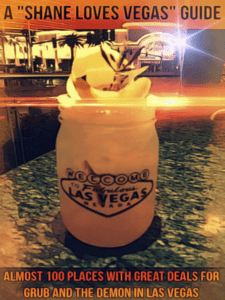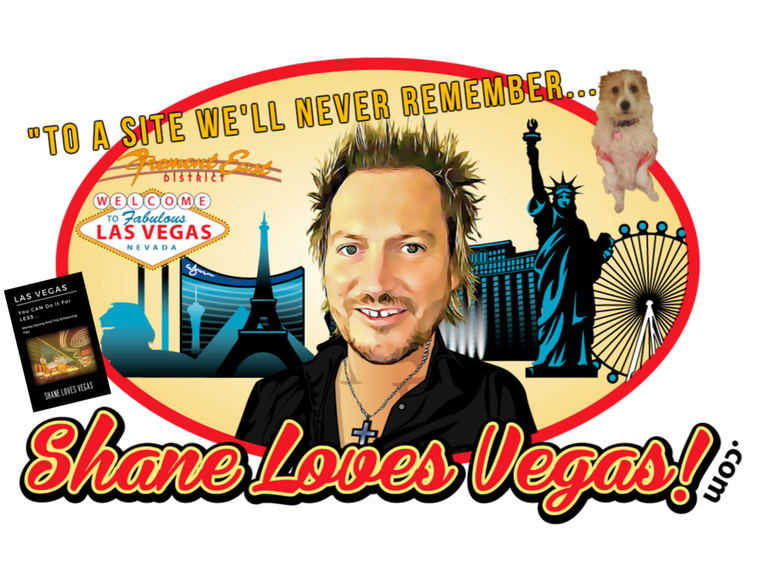
Photo by Tom Podmore on Unsplash
When Was Las Vegas Built?
Las Vegas, a city once known for its desolation and lack of life, is now celebrated as a glimmering oasis in the desert. What began as a small railroad town in 1905 has grown into one of the world’s most vibrant entertainment hubs.
The area was originally named Las Vegas by Rafael Rivera in 1829, which translates to ‘the meadows’. Over time, it was incorporated in 1911 and saw accelerated growth with the construction of Hoover Dam in 1931.
By the 1940s major resorts and casinos had been established on the infamous Las Vegas Strip. In 1966 Howard Hughes began buying up businesses and hotels paving the way for corporate ownership.
Finally, in 1995 Fremont Street Experience opened bringing culture to Downtown Las Vegas. Today Las Vegas is renowned for its spectacular nightlife, iconic hotels and casinos, and major conventions and events – an ironic reversal from its origins over one hundred years ago.
Key Takeaways
-
- Las Vegas was founded as a city in 1905 after the land was auctioned by the railroad company.
-
- The population of Las Vegas experienced a significant boom in 1931 due to the liberalization of divorce laws and the construction of the Hoover Dam.
-
- The development of the Las Vegas Strip and the establishment of themed resorts and casinos began in 1941.
-
- Las Vegas underwent unprecedented growth in the mid-1980s, with the population nearly doubling between 1985 and 1995.
When did it start?
Las Vegas was officially founded as a city in 1905, with the San Pedro, Los Angeles, and Salt Lake Railroad having established it as a railroad town due to the availability of water. The area had been called Las Vegas by Rafael Rivera when he led a trade caravan through the area in 1829, meaning ‘the meadows’ or ‘fertile plains’. By 1844 John C. Frémont had arrived in the valley and Mormon missionaries settled there in 1855. Archibald Stewart purchased Las Vegas Rancho in 1881 before it was acquired by the railroad company.
Urbanization increased significantly with the construction of the Hoover Dam in 1931, which brought workers and tourists alike to the area. This paved way for Howard Hughes to buy up hotels and businesses around 1966 when corporate ownership of hotel casinos became more prevalent. This period saw unprecedented growth between 1985 and 1995 when the population almost doubled from 186,380 to 368,360 people.
Through time, developments such as The Mob Museum on 300 Stewart Ave., the National Museum of Organized Crime and Law Enforcement, New City Hall at 495 S Main St., and Smith Center for Performing Arts have all contributed to making Las Vegas one of the most popular tourist destinations today.
Early Settlement
Situated in the Mojave Desert, a marsh oasis with artesian wells and lush vegetation flourished in Las Vegas Valley to provide a habitat for Native American tribes. The area was named Las Vegas by Rafael Rivera in 1829, which translates to ‘the meadows’ or ‘fertile plains’.
In 1881, Archibald Stewart purchased the land and it later became part of Clark County. Las Vegas was officially founded as a city on May 15th, 1905 when the San Pedro, Los Angeles, and Salt Lake Railroad completed its line through the valley. During this time period, fresh water was piped into the settlement from nearby mountains, making it an attractive destination for farmers. In 1911, Las Vegas was incorporated into Clark County after 168 voters favored incorporation over 57 who opposed it.
The construction of Hoover Dam brought an influx of workers to the area in 1931 and liberalized divorce laws made residency easier – leading to a population boom. This is also when El Rancho Vegas became the first themed resort on The Strip and Gambling was legalized in Nevada that year as well. By 1954 over 8 million people were visiting Las Vegas yearly due to famous stars performing in intimate settings attracting tourists to gamble and eat at buffets. While organized crime had control and vast income from many casinos during this time period, Senator Pat McCarran defeated the proposal for federal gambling legislation in the 1950s helping keep Las Vegas open for business today.
These developments helped shape what we now know as modern-day Las Vegas – an iconic tourist destination is known for its vibrant nightlife industry relying heavily on hospitality services.
Incorporation and Urbanization
In 1911, Las Vegas was officially incorporated into Clark County following a successful vote in favor of incorporation. The city’s population had been steadily growing since 1905 when the San Pedro, Los Angeles, and Salt Lake Railroad established Las Vegas as a railroad town and refueling point. With liberalized divorce laws providing an easier residency requirement, ‘quickie’ divorces after six weeks of residency in Nevada were made available and drew many visitors to the area. Construction of the Hoover Dam brought even more people to the city and spurred an unprecedented period of growth from 1985-1995. In 1931, Las Vegas High School (now known as Las Vegas Academy) was built to meet the increasing demand for education services in the region.
The mid-1940s saw further development on both Fremont Street and The Strip with El Rancho Vegas becoming the first themed resort on The Strip while Flamingo, Last Frontier, and Thunderbird hotels opened up as well. On Fremont Street between Main and Third Streets became known as Glitter Gulch due to its bright neon signs which glimmered at night reminiscent of stars twinkling in a night sky. In 1966 Howard Hughes arrived in Las Vegas buying many hotels and businesses paving the way for corporate ownership of hotel-casinos such as Wynn Las Vegas (built 2005), Paris Las Vegas (built 1999), and The Cosmopolitan (built 2010).
These developments gave birth to what is now known today as modern-day Las Vegas; a vibrant entertainment hub that hosts millions of tourists annually who come for its world-famous casinos, shows, restaurants, shopping centers, museums, performing arts centers etc., making it one of America’s most popular tourist destinations.
Howard Hughes and Family Tourism
With the arrival of Howard Hughes in Las Vegas in 1966, a transformation began that would forever change the face of the city and make it an attractive family tourist destination. His purchase of hotels and businesses paved the way for corporate ownership of casinos. The construction of Caesars Palace in 1966 marked the beginning of high-rise, themed resorts on the Strip. This was followed by New York-New York Hotel & Casino in 1997. With these developments, Las Vegas moved away from its traditional gambling culture towards one that catered to families.
The family-friendly atmosphere was bolstered by increasing entertainment options such as live music venues, performing arts centers, museums, art galleries, and theme parks. The introduction of non-gaming activities allowed tourists to enjoy more than just gambling during their stay. Shopping malls also sprung up on the Strip offering a variety of stores and restaurants for visitors to explore. These new attractions made Las Vegas a desirable place for tourists who wanted to experience something different from other cities offerings.
The development of luxury resorts and entertainment complexes has helped make Las Vegas into one of the world’s top tourist destinations today with more than 40 million annual visitors from around the globe. As a result, it has become one of America’s fastest-growing cities with an economy heavily dependent on tourism and hospitality services such as hotels, casinos, restaurants, and bars. Although there are still some vestiges from its past days as a Wild West town – like Fremont Street – much has changed since Howard Hughes first arrived in 1966 setting off this era of unprecedented growth for Las Vegas which is now considered one of America’s most dynamic cities.
Modern Vegas
Today, the city of Las Vegas is a vibrant entertainment hub and global tourist destination renowned for its iconic hotels and casinos. It has come a long way since it was first established as a railroad town in 1905. Since then, the city has undergone rapid growth and development with major projects such as the construction of Hoover Dam in 1931 which brought an influx of workers to Las Vegas, contributing to its population boom.
Following this period of unprecedented growth, the Fremont Street Experience opened in 1995 with a $70 million canopy and spectacular light and sound show ending auto traffic on Fremont Street. The National Museum of Organized Crime and Law Enforcement also opened around this time.
More recently, new developments have included the opening of City Hall at 495 S Main St., Smith Center for Performing Arts bringing culture to Las Vegas, Zappos taking over previous City Hall for their own use, and New York-New York Hotel Casino built in 1997 followed by Resorts World Las Vegas in 2020 and Aria Resort & Casino being completed in 2009.
Thus, modern Las Vegas is now known for its megaresorts coupled with its vibrant nightlife providing a unique experience to visitors from all over the world.
Frequently Asked Questions
What is the history of the Las Vegas Strip?
The Las Vegas Strip is a major tourist attraction and entertainment hub, known for its vibrant nightlife and iconic hotels and casinos. Its development began in 1941 with the opening of El Rancho Vegas, followed by the Last Frontier, Flamingo, and Thunderbird Hotels and Casinos. Howard Hughes helped transform it into a family tourist center in 1966.
Who owns the casinos in Las Vegas?
Las Vegas is home to numerous iconic hotels and casinos, many of which are owned by large corporations or individuals. Corporate owners include MGM Resorts International and Caesars Entertainment Corporation, while individual owners include Las Vegas casino magnates Steve Wynn and Sheldon Adelson.
What is the weather like in Las Vegas?
Las Vegas is located in the Mojave Desert and has a hot, dry climate with low humidity. Summers are scorching, while winters are mild. Average temperatures range from highs of 32 °C (90 °F) in July to lows of 8°C (46°F) in January. Rainfall averages 4 inches annually.
What are the most popular attractions in Las Vegas?
Las Vegas is a popular tourist destination, with over 42 million visitors in 2018. Popular attractions include the Las Vegas Strip, Fremont Street Experience, and the Mob Museum. Other tourist activities include casinos, shows, shopping, and nightlife.
Conclusion
Las Vegas has come a long way since its humble beginnings in 1829. From the early settlement period to incorporation and urbanization, from Howard Hughes’ influence to the modern day, Las Vegas has been transformed into an epicenter of entertainment and leisure.
Its many iconic hotels and casinos are now world-renowned attractions that dazzle visitors from all over the globe. As Las Vegas continues to grow and evolve, it is sure to remain one of the most remarkable cities in human history; a truly awe-inspiring place that never fails to amaze.
Are Las Vegas casinos smoke-free?
Find out HERE!
free food and drinks guide!
A FREE LAS VEGAS FOOD AND DRINKS GUIDE!
On a mobile device, the guide could download in the background.
On a PC/Laptop/MAC, you will be redirected.
We respect your privacy. Unsubscribe at any time.



